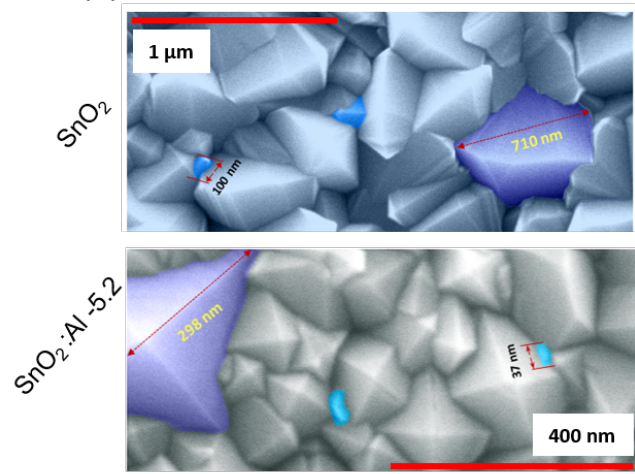
-
- to
Here you will find Getnet Deyu's paper:
"Aluminum-doped tin oxide (SnO2:Al) thin films were produced by an ultrasonic spray
pyrolysis method. The effect of aluminum doping on structural, optical, and electrical properties
of tin oxide thin films synthesized at 420 ◦C was investigated. Al doping induced a change in the
morphology of tin oxide films and yielded films with smaller grain size. SnO2 thin films undergo a
structural reordering and have a texture transition from (301) to (101), and then to (002) preferred
cristallographic orientation upon Al doping. The lattice parameters (a and c) decreases with Al
doping, following in a first approximation Vegard’s law. The optical transmission does not change in
the visible region with an average transmittance value of 72–81%. Conversely, in the near infrared
(NIR) region, the plasmon frequency shifts towards the IR region upon increasing Al concentration
in the grown films. Nominally undoped SnO2 have a conductivity of ∼1120 S/cm, which is at
least two orders of magnitude larger than what is reported in literature. This higher conductivity
is attributed to the Cl- ions in the SnCl4.5(H2O) precursor, which would act as donor dopants.
The introduction of Al into the SnO2 lattice showed a decrease of the electrical conductivity of SnO2
due to compensating hole generation. These findings will be useful for further studied tackling the
tailoring of the properties of highly demanded fluorine doped tin oxide (FTO) films."


